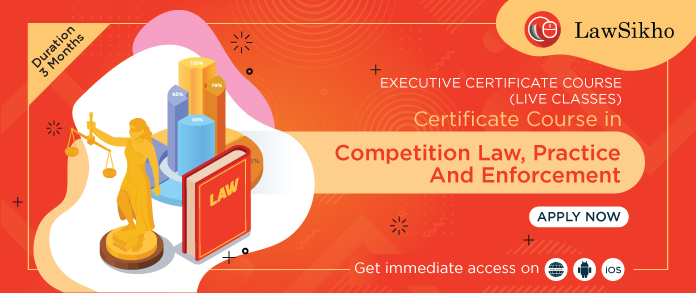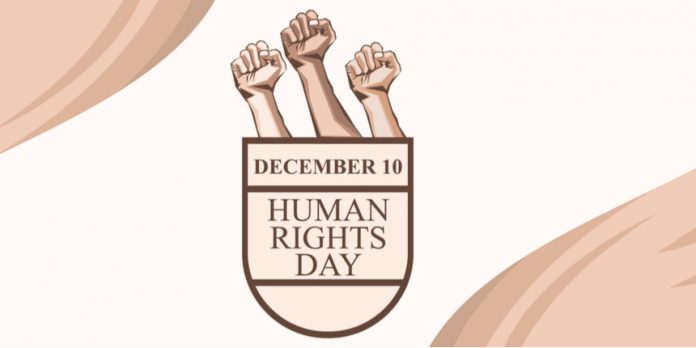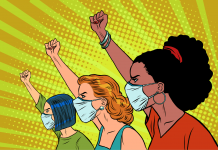This article has been written by Ria Verma, a student at Symbiosis Law School, NOIDA. This article aims to elucidate the meaning of human rights, the significance of Human Rights Day, and the theme for this year.
This article has been published by Diva Rai.
Table of Contents
Introduction
“Where, after all, do universal human rights begin? In small places, close to home – so close and so small that they cannot be seen on any maps of the world. … Unless these rights have meaning there, they have little meaning anywhere. Without concerned citizen action to uphold them close to home, we shall look in vain for progress in the larger world.” – Eleanor Roosevelt.
The COVID-19 pandemic brought our life to a standstill. We had to adjust to the new normality of quarantining and working at home. The pandemic expanded the existing fault lines all across the world. It is imperative to understand the significance of human rights in these trying times.
There have been a number of instances of gross violations of human rights all across the world. To reduce the extent of the crisis, many volunteers formed groups on social media platforms providing information on medicines, hospital beds, oxygen cylinders, availability of vaccines, etc. However, many suffered and lost their lives because of the inadequate infrastructure.
The need to protect the individual’s human rights has attained a greater meaning in the aftermath of the pandemic, leading to more poverty, inequalities, and injustices.
What are human rights
Human rights are rights that exist on the sole ground that we are human beings. These rights are not granted by the State but are inherent to all human beings irrespective of gender, nationality, ethnicity, color, language, religion, or any other such status. These rights emanate from the right to life which includes having basic needs such as food, shelter, health, education, work, and liberty.
The foundations of these rights are the Charter of the United Nations and the Universal Declaration of Human Rights, adopted by the General Assembly in 1945 and 1948, respectively.
- Article 1 of the Universal Declaration of Human Rights (UDHR) states that all individuals have the right to life, liberty, and security.
- Article 5 of the UDHR mandates that no individual must be subjected to torture or any cruel, degrading, or inhuman treatment or punishment.
- Article 9 of the UDHR guarantees equality before the law and the right to an effective remedy for acts violating an individual’s fundamental rights.
- Article 6(1) of the International Convention on the Civil and Political Rights of individuals states that every human being has the inherent right to life which is protected by the law and as such no one can be arbitrarily denied the same.
Human rights law has been gradually expanded since then to encompass specific standards for women, children, persons with disabilities, minorities, and other vulnerable groups, who now possess rights that protect them from discrimination that had long been common in many societies.
The following are the prominent features of human rights:
Universal and inalienable
The principle that human rights are universally applicable is the bedrock of international humanitarian law. It means that all individuals have an equal entitlement to basic human rights. The UDHR laid emphasis on this principle and the same has been reiterated in many international declarations, conventions, and resolutions pertaining to human rights.
Human rights are inviolable and cannot be taken away except in special circumstances and in accordance with the procedure established by law. For example, an individual who has been convicted of a crime by a court of law would not be able to exercise his right to liberty.
Indivisible and interdependent
All human rights are both indivisible and interdependent on each other. In other words, one set of rights cannot be enjoyed without the other set of rights. For example, violating the social, economic, and cultural rights of an individual can have a direct impact on the enjoyment of the other rights by the individual.
Equal and non-discriminatory
Article 1 of the UDHR states that: “All human beings are born free and equal in dignity and rights. They are endowed with reason and conscience and should act towards one another in a spirit of brotherhood.”
Article 2 talks about every individual’s entitlement to freedom irrespective of any distinction between race, religion, or any other status or on the basis of the status of the country or territory to which the individual belongs to. The freedom from any form of discrimination in this article ensures the equality mentioned in Article 1.
The principle of non-discrimination permeates through every international human rights framework. It is present in all the prominent human rights treaties. It is also the core theme for two major conventions- the International Convention on the Elimination of All Forms of Racial Discrimination, and the Convention on the Elimination of All Forms of Discrimination against Women.
Both rights and obligations
All States have ratified at least 1 of the 9 core human rights treaties, as well as 1 of the 9 optional protocols. Approximately 80% of States have ratified at least 4 or more treaties. This gives the States the duty as well as the obligation to protect, respect, and fulfill human rights under international law.
The States have an obligation to refrain from trampling upon and curtailing the enjoyment of human rights. It requires the States to protect individuals and groups of individuals from stark violations of their human rights. They must take positive action to ensure the enjoyment of basic human rights by all.
On the other hand, as individuals, we are entitled to our human rights but we must stand up for the rights of others as well. As stated by Nelson Mandela, “to deny people their human rights is to challenge their very humanity”.
Participation and inclusion
Every individual has the right to have the freedom to actively participate and contribute to the enjoyment of social, political, cultural, economic, and civil development. Through this, we would be one step closer to realizing the fundamental freedoms and human rights of every individual.
Accountability and rule of law
There must be strict compliance with the legal norms and standards stipulated in human rights instruments by the States and the other duty-bearers. On their failure to do so, the aggrieved parties have the option to initiate proceedings for grievance redressal before a competent court or an adjudicator, in accordance with procedure and rules established by law.
Human Rights Day
Human Rights Day is celebrated every day to spread awareness about our inalienable human rights and to celebrate the adoption of the UDHR. A number of programs are organized to encourage governments, organizations, etc. to establish a sense of equality and protect the rights of individuals irrespective of their sex, religion, color, or any other such status.
Human rights are protected by several laws and treaties all across the world. A 47-member group, the Human Rights Council, has been assigned the task of promotion and protection of human rights. These UN member states are responsible to reduce and prevent inequality, discrimination, abuse, giving protection to the vulnerable sections of the society, and giving appropriate punishment to the wrongdoers.
Universal Declaration of Human Rights
On 10 December 1948, the United Nations General Assembly adopted the Universal Declaration of Human Rights (UDHR). It is a milestone document in the history of human rights and was the first legal document stating the basic human rights that needed to be protected universally. It was drafted by representatives belonging to various cultural and legal backgrounds from all territories across the world. It has been translated into more than 500 languages.
It consists of 30 articles and is the basis for all the current as well as the future international human rights legal frameworks, treaties, conventions, legal instruments, and policies formulated.
The UDHR coupled with the 2 covenants – the International Covenant for Civil and Political Rights along with two optional protocols, and the International Covenant for Economic, Social, and Cultural Rights – constitute the International Bill of Rights.
It is widely recognized as inspiring and paving the way for the adoption of more than 70 human rights treaties, applicable today on a permanent basis at global and regional levels. All these treaties reference the document in their preamble, that is, the foreword of all the documents.
It includes 30 rights and freedoms such as civil and political rights, the right to life, liberty, free speech, and privacy; social, cultural, and economic rights such as the right to social security, health, and education, etc. India had an active role in the drafting of the UDHR.
The UDHR does not directly create legally binding obligations on countries since it is not a treaty.
Equality – theme for 2021
The theme for this year’s Human Rights Day is equality. It relates to Article 1 of the UDHR that states that every individual is free and equal.
The principles of equality and non-discrimination are at the center of human rights. Equality is aligned with the 2030 Agenda and the UN’s approach outlined in the document Shared Framework on Leaving No One Behind: Equality and Non-Discrimination at the Heart of Sustainable Development. It includes addressing and finding solutions for deeply ingrained forms of discrimination affecting minorities and the most vulnerable people in societies, such as indigenous people, women and girls, people of African descent, LGBTI people, migrants, and people with disabilities, to name a few.
“Equality means that we embrace our diversity and demand that all be treated without any kind of discrimination,” says UN Human Rights High Commissioner Michelle Bachelet.
Equality and non-discrimination are essential to prevent the biggest global crises of our time. Human rights have the power to address the underlying root causes of conflict and crisis by eliminating inequalities and exclusion, addressing grievances, and giving people the opportunity to participate in decision-making that affects their lives.
A human rights-based approach to development by keeping the values of equality, non-discrimination, and inclusion at the core is an effective way to reduce inequalities and achieve the objectives of the 2030 agenda.
This approach can break the vicious cycle of poverty, pervasive inequality, and normalized structural discrimination. An economy based on human rights should be the foundation of a new social contract allowing every individual the right to enjoy a clean, safe and healthy environment and work towards a sustainable environment for future generations.
The “COVID generation” is especially vulnerable to falling prey to mounting debts, poverty, and inequality. Financial and health crises have adverse impacts on millions of young people. Their rights need to be protected by giving them employment opportunities as well as social protection.
Vaccine inequality is a recent alarming issue. Hoarding vaccines and distributing them unfairly is against the very spirit of global solidarity and it is the need of the hour for the government to formulate effective policies to ensure that every individual has access to the vaccine.
Climate change, pollution, and forest fires cause environmental degradation on a large-scale impacting the livelihoods and safety of millions. Existing inequalities are expanded and the rights of the present, as well as the future generations, are negatively affected. The policy-maker must emphasize green recovery, that is, utilizing innovative sustainable projects, restructuring critical sectors, and accelerating the pre-existing environmental plans.

Human Rights in India
Human rights enumerated in the Universal Declaration have been enunciated in the Indian Constitution in two parts- the Fundamental Rights and the Directive Principles of State Policy.
Articles 12 to 35 cover the fundamental rights in the Constitution. These include the Right to Equality, Right to Freedom, Right Against Exploitation, Right to Freedom of Religion, Cultural & Educational Rights, and Right to Constitutional Remedies.
Articles 36 to 51 cover the directive principles of the state policy in the Constitution. These include the right to work, to free choice of employment, right to social security and protection against unemployment, right to equal pay for equal work, right to existence worthy of human dignity, right to free & compulsory education, equal justice & free legal aid and the principles of policy to be followed by the State.
Protection of Human Rights (Amendment) Act, 2019 provided for the institution of a National Human Rights Commission at the Union level, and supervising the State Human Rights Commission in States and Human Rights Courts for facilitating better protection of Human Rights and matters connected therewith or incidental thereto.
Conclusion
Human rights are applicable universally and every individual around the world deserves to be treated equally and with dignity. Basic rights include freedom of speech and expression, privacy, health, life, liberty, and security, as well as adequate standards of living. The government has the duty to safeguard vulnerable communities from abuse by third parties.
Societies capable of promoting and protecting human rights for everyone are more resilient and sustainable and are better equipped to deal with unforeseen circumstances such as pandemics and the negative implications of the climate crisis.
It is time to not just demonstrate solidarity through words, but also act to end extreme forms of violence, prevalent inequalities, and injustices. Dowry deaths, rapes, female foeticide, hate crimes against LGBTQIA+, racism, xenophobia, religious discrimination, cyberbullying are critical issues that need to be addressed and effective solutions are required to deal with them.
A new social contract is the need of the hour. We need to address the structural inequalities and discrimination, ensure the participation of all communities, firm political commitments, and a more equitable allocation of resources, power, and opportunities between the poor and the rich. The school curriculum must build courses aimed at building rationalistic thoughts and scientific temper so that students are conscious citizens and are aware of their rights from a young age. Social media is a great platform to sensitize the public towards practices that violate human rights, for example, female genital mutilation. At the same time, fake news misleading the public must be regulated.
We need to stand up for our rights and those of others. We can take action in our day-to-day lives and uphold the rights that protect all of us. We must strive for a world where we all can live with our heads held high and where equal rights and opportunities are not a dream but a reality.
References
- https://www.ohchr.org/en/issues/pages/whatarehumanrights.aspx
- https://www.un.org/en/observances/human-rights-day
- https://www.unicef.org/child-rights-convention/what-are-human-rights
LawSikho has created a telegram group for exchanging legal knowledge, referrals and various opportunities. You can click on this link and join:
https://t.me/joinchat/L9vr7LmS9pJjYTQ9
Follow us on Instagram and subscribe to our YouTube channel for more amazing legal content.
 Serato DJ Crack 2025Serato DJ PRO Crack
Serato DJ Crack 2025Serato DJ PRO Crack










 Allow notifications
Allow notifications



